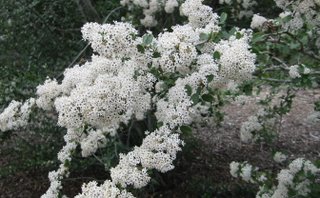December 2006 Los Feliz Ledger Column: "Easy Transitions"

Above photo of Fremontodendron by Mike Bauman
Shifting to gardening with natives doesn’t have to happen overnight. Gardeners can ease into it by removing a couple non-natives (exotics) in favor of more climactically correct choices and then continue the process at their own pace.
Walking around my neighborhood sparked this notion as I passed one house after another with gardens full of every plant from everywhere but here. I started to consider what would look similar but conserve water, bring in more native wildlife and not take over the neighborhood through invasive growth.
One typical Southern California garden favorite that stood out to me as having a striking native doppelganger was a yellow flowering hibiscus towering upwards of 10 feet tall. Hibiscus is popular here but is not meant for dry, hot climates. It requires regular water, hailing from Hawaii and tropical areas of Africa. Many of the specimens one sees around these parts have developed serious white fly infestations – a clue that something is out of balance.
Avoid this and other complications by replacing a golden-blossom hibiscus with Fremontodendron californicum. It reaches a similar height of 10-20 feet and wants virtual drought during the dry season. In fact, irrigating in the summer almost always results in death. Think of it as built-in protection from wasting our precious water supply.
It’s best to put Fremontodendron in the ground at this time of year. Post-winter installation can be problematic so if you want to give it a whirl, pick one out now and place in its new home as soon as possible.
A ubiquitous and, unfortunately, invasive (see the California Invasive Plants Council’s Web site for more info) landscape favorite, is fountain grass – purple and otherwise. It should be avoided at all costs in favor of natives, such as Muhlenbergia rigens (deer grass), that will provide a similar shape and effect but not spread indiscriminately. Deer grass offers wildlife cover and nest building materials and is excellent for erosion control. Plant it in either a full sun or partly shady place. This native is easy to please; it can withstand drought once established or take regular garden water.
So, if a California native garden is something you long for but seems too overwhelming, take a little sojourn out into your yard and have a look around. Maybe there are a few exotics that can be sacrificed to get the ball rolling. Just keep this in mind: start small and the momentum will build over time.

